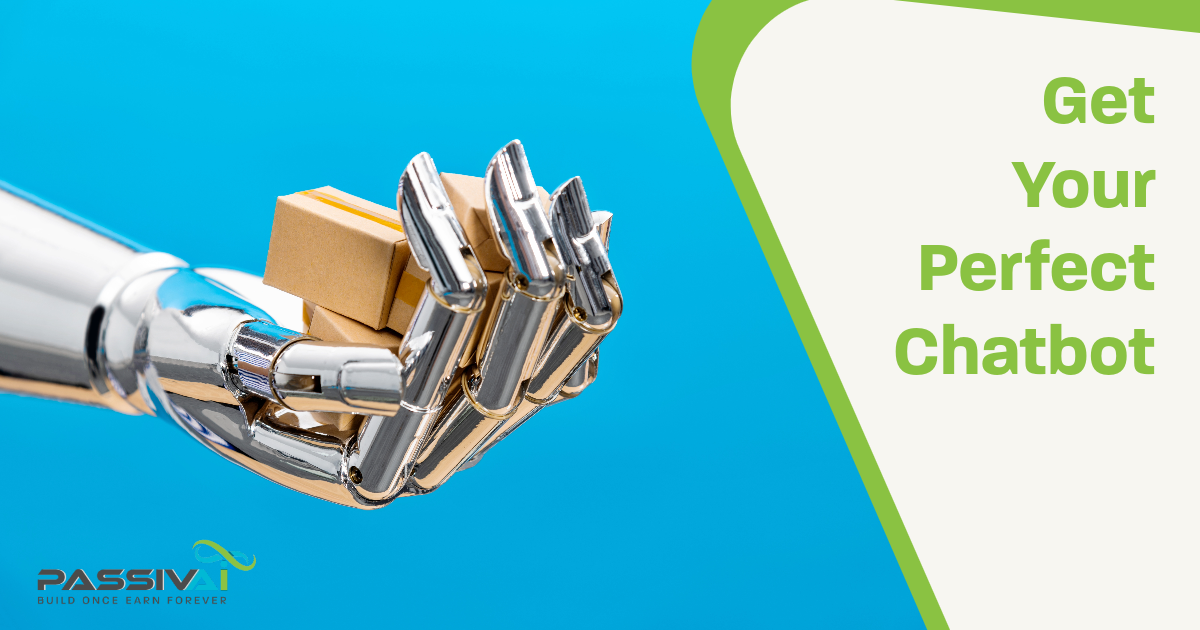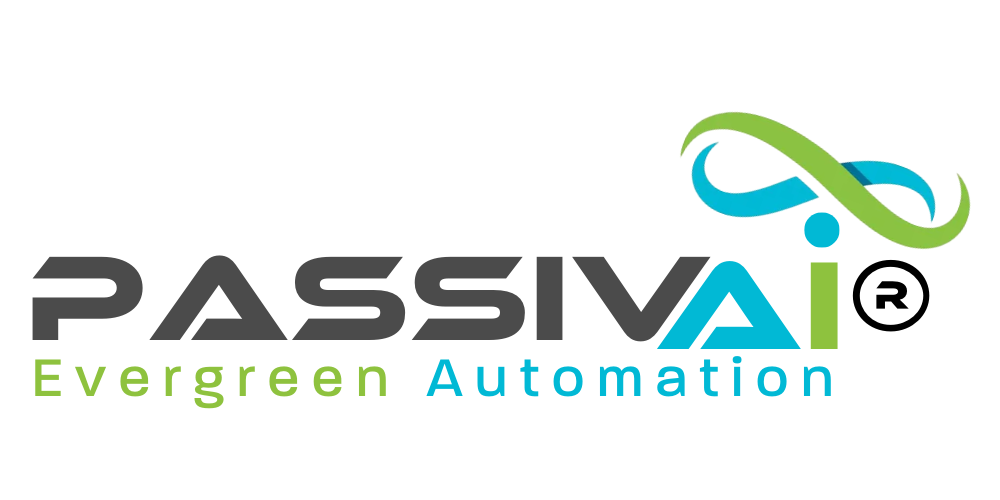What is a Chatbot?
Explore the Wonders of Conversational AI
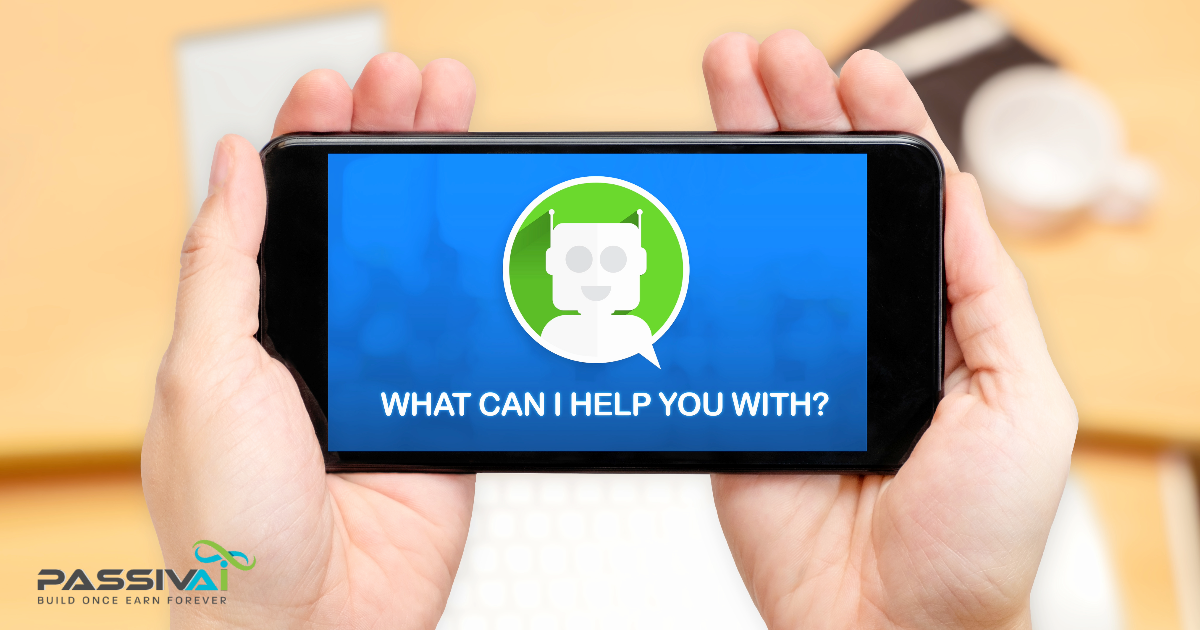
We have all seen them, but what is a chatbot, exactly?
The term "chatbot" has become increasingly prevalent in today's rapidly evolving technological landscape. Chatbots have transformed how we engage with digital platforms, from customer service interactions to personal assistants.
The following guide will delve deep into chatbots:
What is a Chatbot ~ Chatbot Functionality ~ Evolution of Chatbot Technology ~
Chatbot Statistics ~ Exploring Chatbot Diversity ~ Chatbot Uses ~
Definition of Chatbot - What is a Chatbot?
What is a chatbot in simple terms?
Chatbots, short for "chat robots," are software programs that simulate human conversation. They aim to facilitate interactions between users and computer systems using natural language processing (NLP) techniques.

A chatbot is a computer program designed to simulate human conversation. Imagine having a conversation with a friend, but instead of talking to someone, you're talking to a software-driven entity. Chatbots use artificial intelligence (AI) to understand and respond to text or speech inputs, providing a natural and interactive way for users to interact with computers and services.
Chatbot Functionality
What is a chatbot in terms of functionality?
The functionality of chatbots is underpinned by a combination of technologies, including artificial intelligence (AI) and machine learning (ML). NLP, a subset of AI, equips chatbots with the ability to comprehend and generate human language. Chatbots learn from each interaction through ML, improving their responses and accuracy.

Chatbots use algorithms to analyse user input, identify intent, and formulate appropriate responses. They break down user queries, understand the context and extract relevant information to generate meaningful replies. This intricate process ensures that the conversation feels natural and expressive to users.
Chatbot Evolution: A Brief Timeline
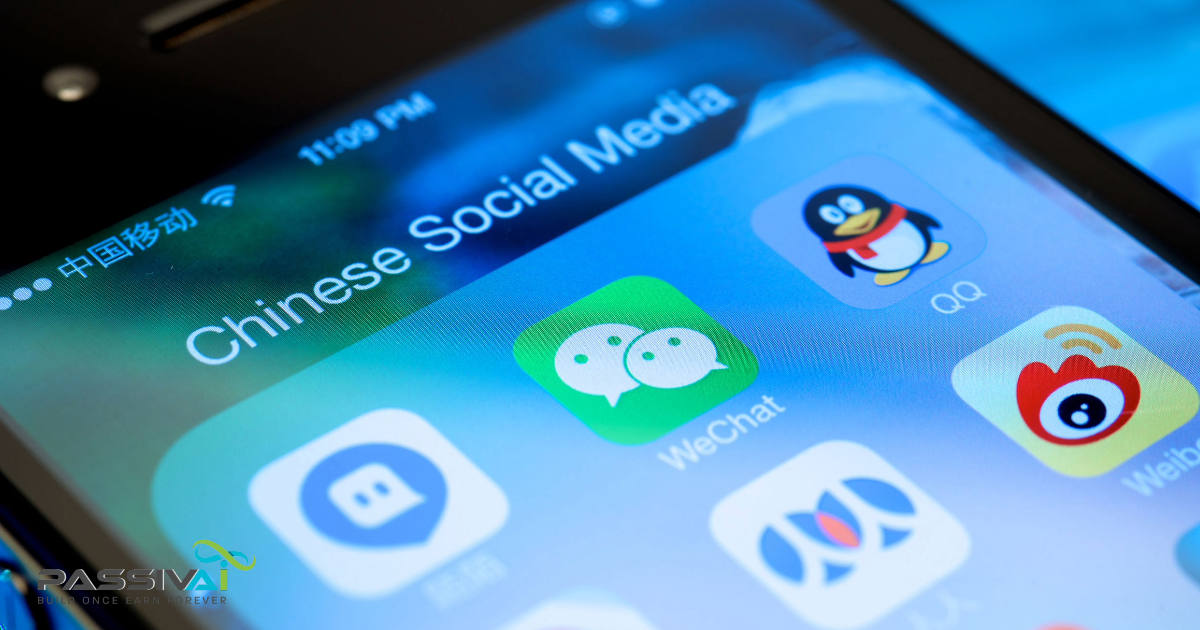
What is a chatbot's timeline of evolution?
While the concept of chatbots dates back several decades, their capabilities and popularity have skyrocketed in recent years.
A brief timeline goes like this:
- MIT professor Joseph Weizenbaum developed the first chatbot, ELIZA, in 1966.
- In 2009, a company called WeChat, based in China, created a more advanced Chatbot.
- In 2016, we saw the first wave of artificial data technology when Facebook developers created a chatbot for their trademark messaging service.
- Open-AI releases GPT-3 in 2021, a powerful language model that enables chatbots to create highly coherent and contextually relevant text.
For a complete outline of Chatbot History, check out our page on how and when chatbots were first invented and how they were utilised...
Chatbot Statistics: 10 Benefits of Chatbot Technology

What is a chatbot in terms of benefits to the industry adopting them?
As we delve into the statistics, it becomes evident that the chatbot industry is thriving and shaping the landscape of customer service, brand communication and various e-commerce sectors.
1. Booming Industry Growth:
The realm of chatbots is no small player in the market, as indicated by the whopping figures. In 2023, the chatbot industry boasts a value of $137.6 million, and this is just the tip of the iceberg. Forecasts are pointing towards an impressive prediction of $239.2 million by 2025. This substantial growth signifies the increasing acceptance of chatbots and their pivotal role in shaping the future of business-customer interactions.
2. Time-Saving Marvels:
Among the most remarkable features of chatbots is their ability to save precious time for businesses and customers. A striking statistic showcases that integrating chatbots into companies can conserve up to 2.5 billion hours. This time-saving factor is because a single customer support representative typically handles an average of 17 interactions daily. By offloading routine queries and tasks onto chatbots, human agents can focus on more complex and personalised customer interactions.
3. Powerful Conversationalists:
When it comes to engaging in conversations, chatbots are truly versatile. These virtual assistants can complete an impressive 70% of conversations. This prowess goes beyond simple queries, encompassing many interactions and engagements. Their efficiency in handling conversations enhances customer satisfaction and optimises operational efficiency for businesses.
4. Preferred Problem Solvers:
A fascinating revelation is that a considerable majority of customers, about 74%, prefer interacting with chatbots rather than human corporate agents to resolve their queries. This preference stems from chatbots' speed, accuracy and availability, catering to our fast-paced digital age. The rise in this preference emphasises the growing trust and reliance customers place on these automated assistants.
5. International Variations:
Interestingly, the prevalence of chatbots varies across different regions. While they are making their mark in various parts of the world, the United Kingdom stands out as a hotbed for chatbot adoption. This regional variation underscores how cultural and market dynamics influence this technology's rate of integration and acceptance.
6. Exponential Growth Trajectory:
Within brand communication, chatbots are the fastest-growing medium, boasting an astonishing growth rate of 24.9%. This trajectory showcases how companies recognise the power of chatbots in connecting with their audiences, disseminating information, and delivering value, all while adapting to evolving consumer preferences.
7. Sector-Specific Solutions:
In 2023, the healthcare and financial sectors experienced a remarkable transformation, with chatbots at the forefront. These virtual assistants handle up to 90% of enquiries in these sectors. This shift highlights the growing role of chatbots not only in customer service but also in industries where accuracy and efficiency are of paramount importance.
8. E-commerce Evolution:
Chatbots are playing a pivotal role in the thriving e-commerce sector. Their integration has enhanced customer experiences, streamlined purchase processes and even personalised recommendations to potential customers. This symbiotic relationship between chatbots and e-commerce illustrates how technology reshapes how we shop and interact with brands online.
9. Acceptance and Growth:
While the growth of chatbots is undeniable, it's important to note that only 9% of customers believe businesses should never adopt chatbots. This low figure suggests a high degree of acceptance and openness to this technology among most consumers.
10. Mass Adoption:
The impact of chatbots magnifies when we consider the staggering number of these virtual assistants in use. Facebook Messenger alone hosts over 3 million chatbots. This massive adoption underscores the omnipresence of chatbots in our digital interactions, from casual conversations to complex transactions.
Exploring the Diversity: Different Chatbot Types
Chatbots have become a versatile tool in modern technology, serving a variety of purposes across different industries. At the moment, there are three main types of chatbots, each with distinct characteristics and applications that cater to diverse user needs.

Chatbots come in various types, each with its unique characteristics and purposes:
- Rule-Based Chatbots: These follow predefined rules and patterns to respond to user inputs. While limited in their capabilities, they are adequate for simple tasks like providing basic information or directing users to specific resources.
- AI-Driven Chatbots: Leveraging machine learning and AI, these chatbots can understand context, learn from interactions and offer more sophisticated responses. They excel in handling complex queries and evolving conversations.
- Virtual Assistants: Virtual assistants like Siri, Google Assistant, and Alexa are chatbots that focus on voice interactions. They perform tasks ranging from setting reminders and playing music to providing weather updates, showcasing the power of chatbots in daily life.
Revolutionising Industries: Chatbot Use Cases
What is a chatbot in relation to its primary uses?
A chatbot's primary function is understanding and responding to user queries and commands, effectively mimicking human conversation. They can be found across various platforms, including websites, messaging apps and voice assistants.
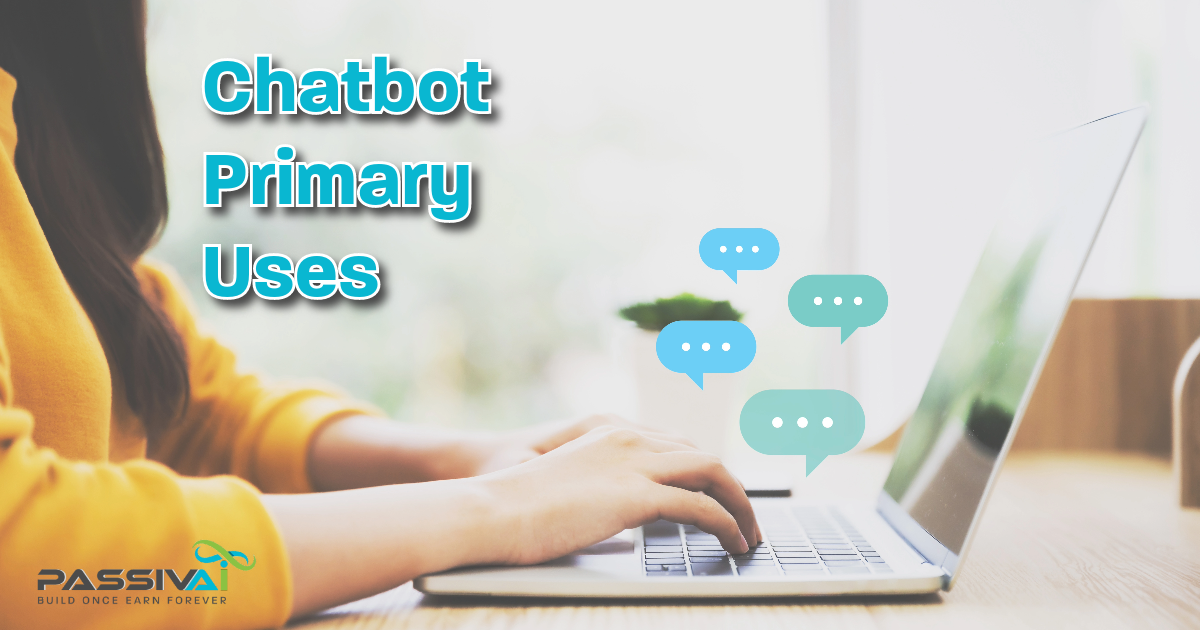
The applications of chatbots span a wide array of industries, reshaping how businesses and individuals interact with technology.
The four most common industries utilising the power of chatbots are listed below. These industries are early adopters and have enjoyed the benefits of chatbots for many years:
- Customer Service: Chatbots have revolutionised customer support by providing instant responses, 24/7 availability, and seamless issue resolution. They guide users through troubleshooting processes and assist in making informed decisions.
- E-Commerce: In the realm of e-commerce, chatbots enhance user experiences by offering personalised product recommendations, answering questions, and streamlining the purchasing process.
- Healthcare: Chatbots facilitate further medical diagnosis, appointment scheduling and providing essential health information. They alleviate pressure on healthcare professionals and offer quick assistance to patients.
- Finance & Banking: Financial institutions employ chatbots for account management, transaction history inquiries and budget tracking tasks. They provide a convenient and secure way to manage finances.
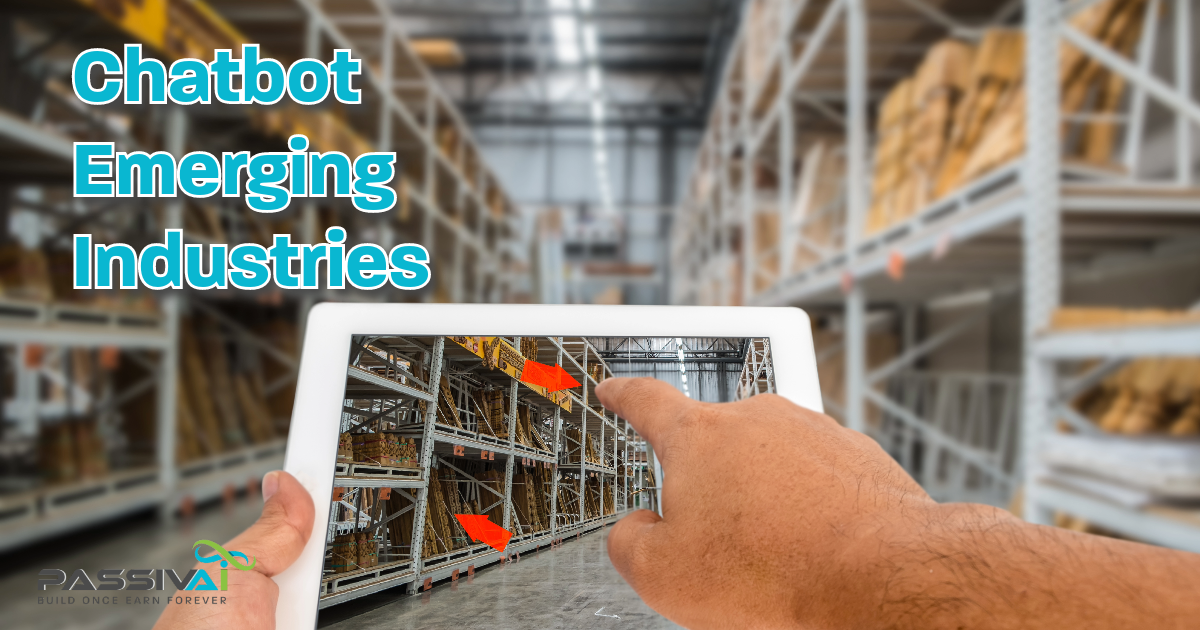
Other industries include:
- Travel and Hospitality: Chatbots help users with travel bookings, provide travel information, and offer customer support during trips.
- Education: Chatbots support online learning, answering students' questions and guiding them through coursework.
- Human Resources: Chatbots streamline hiring processes, assist with job applications, answer common HR-related questions, and schedule interviews.
- Real Estate (Estate Agents): Chatbots assist users in finding properties, providing information about listings, and scheduling property tours.
- Entertainment: Chatbots offer trivia quizzes, storytelling, and interactive experiences for engaging user interactions.
- Food and Beverage: Chatbots simplify delivery orders, offer menu recommendations, and process payments.
- Government Services: Chatbots inform citizens about government programs, services, and processes.
- Insurance: Chatbots help users with policy information, claims processing, and coverage details.
- Automotive: Chatbots provide information about vehicle models, features, and pricing to assist customers.
- Fitness and Wellness: Chatbots offer workout routines, healthy recipe ideas, and motivation for fitness enthusiasts.
- Charities and Non-profits: Chatbots help gather donations, provide information about causes, and offer ways to get involved in charitable efforts.
- Construction and Builders: Chatbots assist builders in managing project timelines, providing updates on construction progress and addressing queries from clients and stakeholders.
Chatbot Design: Crafting User-Centric Chatbot Interactions
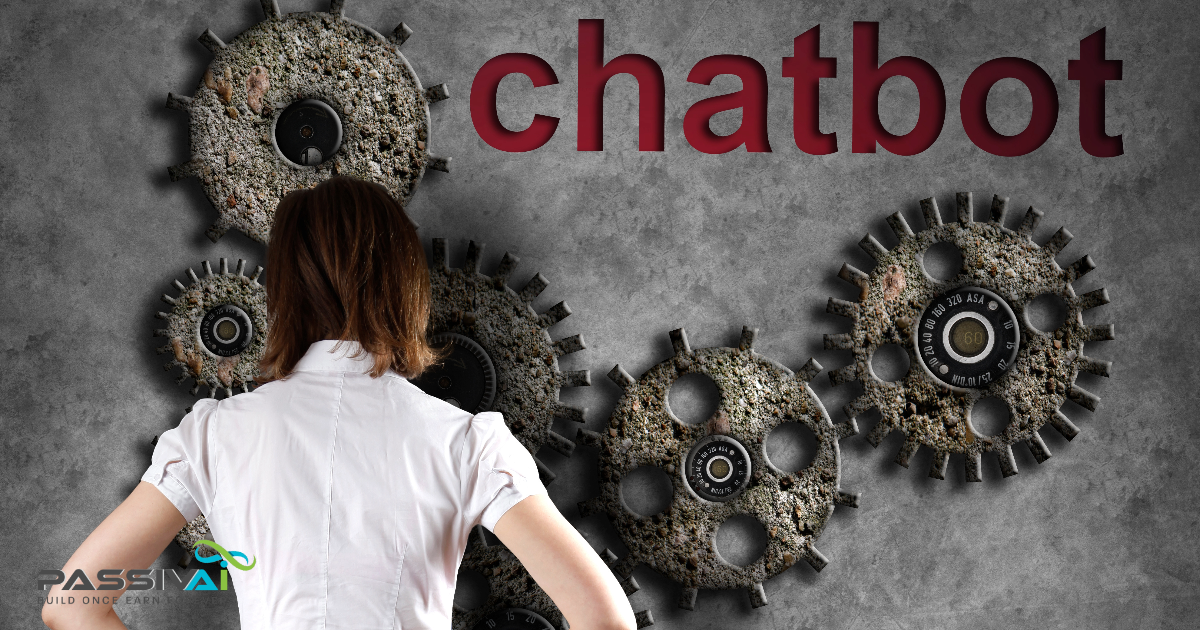
What is a chatbot that takes the user experience into the forefront of its design?
Designing an effective chatbot involves carefully considering user experience (UX) and user interface (UI) design. The following points are vital to its functional success:
- Clear conversation Flows: Design chatbot conversations that are intuitive and easy to follow. Provide clear prompts and options to guide users through interactions.
- Personalisation: Implement personalisation strategies to make interactions more relevant and engaging. Use data to tailor responses and recommendations to each user's preferences.
- Multichannel Integration: Ensure chatbots can seamlessly transition between various channels like websites, social media, and messaging apps. Consistency across platforms enhances the user experience.
- Human Handover: Incorporate a mechanism for seamless handover to human agents when chatbots encounter complex queries or frustrated users. This maintains a high level of customer satisfaction.
Shaping Tomorrow: Innovations in Chatbot Tech

As technology evolves, chatbots are poised to introduce several ground-breaking trends.
Here we ask what is a chatbot of the future...
- Voice-Activated Chatbots: Voice assistants are on the rise, allowing users to interact with technology through natural speech. This evolution brings a new dimension to user engagement.
- Emotional Intelligence: Future chatbots might be equipped with emotional intelligence, enabling them to detect and respond to users' emotions, enhancing empathy and connection.
- Multi-Modal Interactions: Chatbots will likely expand their capabilities to engage users through text, voice, images and gestures, offering a more immersive experience.
Quick Summary: A New Era
In this guide, we've embarked on a journey to uncover the world of chatbots. We asked 'what is a chatbot?' and discovered their humble beginnings to their current state as sophisticated conversational AI.
We have drastically transformed how we interact with technology. We understand that chatbots have become indispensable tools across industries, facilitating everything from customer support to medical consultations.
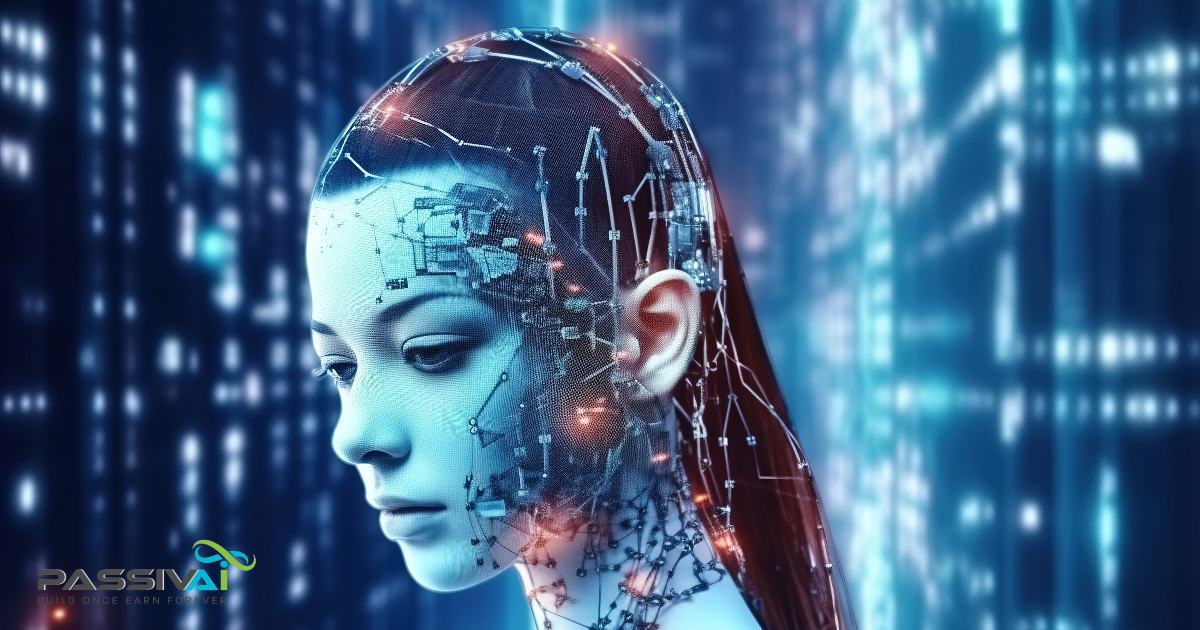
The world of chatbots is not just a passing trend; it's a paradigm shift in how businesses engage with their customers. The statistics vividly depict an industry's upward trajectory, fundamentally altering customer service, brand communication and e-commerce.
As we look to the future, the potential for further innovation and integration of chatbots seems limitless. With advancements in AI and the integration of new technologies, we can anticipate even more seamless, personalised and human-like interactions.
Whether you're a business seeking to enhance customer engagement or an individual embracing the convenience of virtual assistants, understanding precisely what is a chatbot's function for you and your business is a vital step toward embracing the digital age and its endless potential.
So now you know, and when someone asks, "What is a chatbot?" it's essentially a virtual entity capable of engaging in text or speech-based interactions and is basically a conversational robot that opens up new avenues for communication and assistance in today's digital age.
Embrace Chatbot Technology or Risk Your Competitors Taking the Edge
Are you ready to transform your business?
Are you prepared to take your customer service, e-commerce or sales to the next level?
Harness the power of cutting-edge technology and revolutionise how you interact with your customers.
It's time to consider incorporating a chatbot into your business strategy and witness the incredible benefits first-hand.
Here's why you should act now:
- Efficiency Redefined: Imagine saving up to 2.5 billion hours of customer support time. With a chatbot at your side, routine queries and tasks are seamless, freeing up your human agents to focus on what truly matters - providing exceptional, personalized assistance.
- Customer Satisfaction Elevated: Join the 74% of customers who prefer chatbots' speed, accuracy, and convenience over traditional methods. When your customers experience immediate assistance and round-the-clock availability, they'll keep returning for more.
- Seize the Global Market: Chatbots transcend boundaries whether you're a local business or a global brand. Expand your reach and cater to a diverse customer base by integrating language support and cultural understanding into your chatbot's capabilities.
- Unmatched Growth Potential: With a 24.9% growth rate, chatbots are the fastest-growing brand communication medium. Stay ahead of the competition by embracing this trend and effectively connecting with your audience across various platforms.
- Sector-Specific Solutions: Whether in healthcare, finance, e-commerce, or any other industry, chatbots are here to enhance your operations. Prepare to witness chatbots handling up to 90% of inquiries in healthcare and finance alone, ensuring accuracy and efficiency.
Take advantage of the Future of Customer Engagement
Explore the range of chatbots on offer...
From customisable solutions to advanced AI-driven interactions, our chatbots cater to your unique business needs.
Join the league of innovative businesses reaping chatbot integration's benefits.
Your customers deserve the best - give them the seamless, efficient, personalised experience they'll remember.


